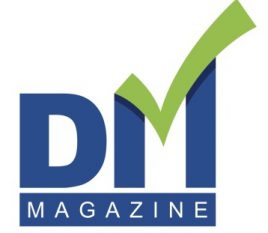 By Gil Katz
By Gil Katz
Marketing is currently going through monumental changes as AI enables enhancing, optimizing and automating many steps in the process. Following is a summary of the types of marketing activities that AI tools can help with.
- Each one has many providers with subtle feature variations. Looking for the best tools for your needs can become overwhelming and so a useful approach can be to:
- Register for free trial accounts to try multiple providers per feature
- Look for “Lifetime Deals” from upcoming providers to avoid monthly fees
1. Brainstorming Tools
- Topics – based on market trends, AI suggests ideas for specific audiences
- Creative Concepts – recommends themes and slogans based on campaign goals
- Headlines – title variation ideas using engagement and click data2. Content Creation
2.1. Text Writing
Using prompts, keywords and data feeds, AI can write draft content for:
- Website pages
- Blog posts
- Article research
- Advertising copy and calls to action
- Social media posts – promotional, seasonal or other theme-based content
- Email newsletters – using data from your website or other sources
- Product descriptions – for eCommerce sites
- Summarize long-form text into shorter segments
2.2. Text Optimization
- Branding – align text with a specific brand style guide, voice and tone
- Translation – generate a draft version in any language for a human translator to review
- Localization – align text with unique local cultures and demographics
- Multi-platform – adapt text for each platform’s format (for example, short text on X)
- Re-phrase – re-write the same message in different words
2.3. Image Creation
- Image Generation – from text prompts to any mix of photos, illustrations and styles
- Image Enhancement – from low to high-res quality, or detect / add / remove / edit elements in an image (for example, remove a background or part of an image and generate realistic replacement fill-in instead)
- Brand Identity – generate logo design ideas, typography options, colour schemes
- Social Media Images – with specific dimensions as required for each platform
2.4. Video Content
- Video Generation – from a mix of settings, content elements, scripts and prompts
- Product Videos – turn product photos into videos (for example, jacket photos generating a video of a model wearing it)
- Edit Videos – tools for enhancing footage, adding transitions, captions and more
- Video Scripts – optimized for each platform’s algorithm to maximize views
2.5. Audio Content
- Voiceovers – narration audio in any language, voice and matching talking avatars
- Singing – beyond narration, actual singing in multiple voices for making music
- Background Music – generic music from any musical style
- Featured Music – create full songs to accommodate AI singers
- Intro/Outro – script and audio for podcasts, adjusted for specific audiences
2.6. Interactive Content
- Surveys – generate form questions as a quiz or poll for social engagement
- Chatbots – generate leading questions to manage chat conversations
- AR/VR – include face recognition, augmented reality filters and virtual reality content
3. Content Optimization
3.1. Content Conversion & Extraction
- Extract text from an image – even if the text is stylized within the image
- Turn a few photos into a video – to create a product demo or walk-through
- Generate text captions for a video – save dictation effort and time
- Compress image and video file sizes – by extrapolating with minimal visually identifiable differences
- Personalize Images – auto-adjust images in promos for each user based on data (for example, if the user likes the colour blue show them that image in blue)
3.2. Text Optimization
- Grammer – fix errors and improve writing style
- Readability – optimize the text for specific audiences
- Plagiarism – check that the text is not copied from anywhere available online
3.3. Content Personalization
- Personalized Messages – unique text based on user preferences and behaviour
- Segmented Messages – unique text based on general user personas
- Real-Time Messaging – change content based on user interaction
3.4. Content Analysis for Optimization
- Pre-Publishing Analysis – estimate potential views and clicks on specific heading or text
- Post-Publishing Analysis – compare content views with competing content and generate insights on how to improve it for better results
- A/B Testing – generate several versions of content to find out which works best
4. Lead Generation
- Smart Chatbot – that knows the website content, can answer questions and direct chats to capture lead details for next steps
- Identify Prospects – list web visitors and use data to identify anonymous visitors
- Visitor Intent – once a visitor is identified, study their web searches, page visits, time spent and more to tailor direct outreach to them via automated chat messages, emails or other methods
- Lead Scores – compares visitors to the optimal target market and shortlist leads
- Automate Prospecting – auto-send messages across multiple channels including emails, Linkedin connection requests, SMS, phone calls, WhatsApp and more
- Targeted Videos – generate personalized video messages per lead
- Lead Magnets – generate eBooks and other content to attract engagement
- Social Media Promos – generate social promos that lead to engagement
- Sales Forecasts – use past data to predict campaign lead conversion
- Influencer Outreach – auto-identify influencers and contact them
5. SEO Optimization
- Keywords – identify and analyze high ranking content and improve based on it
- Content Scores – analyze your content and suggest updates to improve SEO
- Meta-Data Updates – auto-improve image alt tags, descriptions and more
- Schema Generation – for web pages to tell Google about them
- Voice Search Results – analyze Google voice searches and optimize for that
- Auto-Refresh Content – identify old content and auto-update it for SEO optimization
6. Analysis and Insights
- Optimal Timing – recommend the best times for social posts or email campaigns
- Optimize Email Delivery – avoid emails going to spam with advanced tools (checking for spam words, rotate email servers and more)
Competitor Analysis – identify keyword opportunities and auto-update content - Find Influencers – for your target market and product or service
- Public Sentiment – find out what people think about brands and topics
- Optimize Prices – compare competitor pricing to identify opportunities
- Detect Ad Fraud – to minimize paying for fake clicks
- Customer Insights – analyze and segment your and competitor’s data
Estimate Ad Results – analysis for ad result prediction based on input - Listen to Social Media – analyzes competitor social content to find trends
- Analyze Images – ability to identify brands, people, locations and more in an image
There are incredible opportunities and challenges in this new AI-based marketing environment and as the proverb says “the early bird gets the worm” – the sooner your organization embraces AI tools, the more competitive it will be. Good luck!
Gil Katz is Director of Operations at Giant Step and MentorEase mentoring software.




